George Goodwin Kilburne
British, (1839-1924)The Favourite
Oil on panel, signed
Provenance: Horner Galleries, Sheffield; Colmore Galleries Ltd, Henley-in-Arden
A finely painted genre scene of a man and a woman with a greyhound by George Goodwin Kilburne. A man and a woman dressed in 18th century costume are depicted taking tea in the drawing room of a fine house. The woman, who is sitting at a table set for tea, can be seen having turned towards a greyhound to feed the dog a treat. The man is shown standing by the fireplace, watching on with a tea cup in his hand. During the 18th century, tea was expensive and could only be afforded by the wealthy, giving rise to the British tea ceremony. During the ceremony, which allowed a host to display their wealth and command of etiquette, the tea was usually prepared by the lady of the house with a tea service of porcelain and silverware.
George Goodwin Kilburne was a genre painter both in oil and watercolour and engraver who was born in Reepham, Norfolk on 24 July, 1839 to Goodwin Kilburne and Rebecca Button. His father was a school master and by 1844 had moved the family from Norfolk to Kent, where he ran a private school in Hawkhurst. Kilburne was educated at the school and after leaving went on to serve a 5 year apprenticeship to London engravers and illustrators the Dalziel Brothers, studying wood engraving. On 21 June, 1862 he married Janet Dalziel the daughter of Robert Dalziel and niece of his employer, George Dalziel. The couple lived at Hilldrop Road, Islington and together had 3 sons and 2 daughters. One of his sons, George Goodwin Jnr (1863-1938) also became an artist.
By 1862, he had started turning from engraving to painting, quickly establishing himself as the leading painter of female beauties usually set against richly decorated interiors or in natural romantic backgrounds. He began exhibiting at the Royal Society of British Artists in 1862 and at the Royal Academy from 1863. He also exhibited at the New Watercolour Society, becoming a member in 1866 and at the Grosvenor Gallery. He enjoyed considerable success and around 1875, moved to Hawkhurst House, Steele’s Road in Hampstead where he lived for over 35 years.
His first wife died in 1882 and on 27 July, 1899 he married for the second time to Edith Golightly with whom he had 2 daughters. By 1915, he had moved to 16 Albion Road in Swiss Cottage where he spent the rest of his life. He died at his daughter’s residence, 38 Steele’s Road, Hampstead, on 21 June, 1924 and was buried at Highgate Cemetery.
Examples of his work can be found in many public and private collections including Horsham Museum, Manchester Art Gallery, National Trust, Russell-Cotes Art Gallery and the Walker Art Gallery, Liverpool.
© Benton Fine Art
| Presentation | The work is housed in a new, English made gilt frame which is in excellent condition. The reverse bears a label for the Horner Galleries, a fine art gallery founded in Sheffield in 1886 by F J Horner. It was originally based at 19 Angel Street until 1911 when it moved to 17 King Street. In 1925 it relocated to The Cathedral Corner, 2, Church Street, where it operated until its closure in 1939. The painting also retains a label for Colmore Galleries, a fine art dealership, framers and restorers based at 52 High Street, Henley-in-Arden, Warwickshire. It was established in 1973 and continued until the early 2000’s. |
| Condition | As with all of our original antique oil paintings, this work is offered in ready to hang gallery condition, having been professionally cleaned, restored and revarnished. |
Dimensions
| Image Size | 11.5 inches x 15.75 inches (29.5cm x 40cm) |
| Framed Size | 17.75 inches x 22 inches (45cm x 56cm) |
You May Also Like











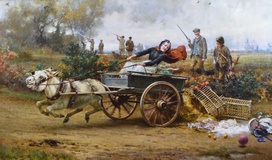
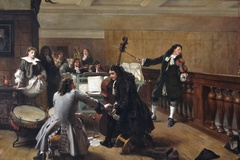
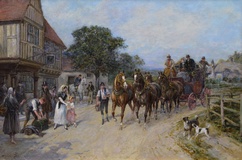
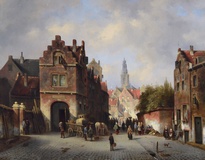
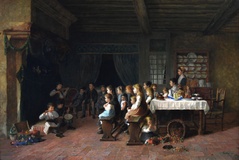
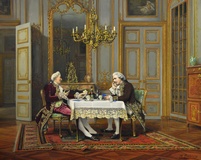
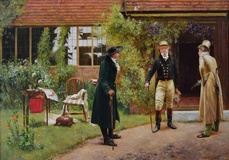
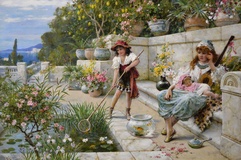
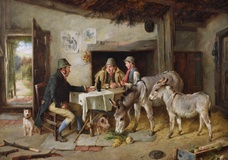
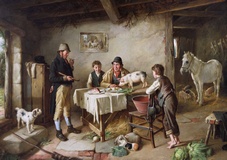
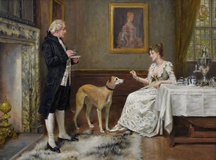 The Favourite - George Goodwin Kilburne
The Favourite - George Goodwin Kilburne

